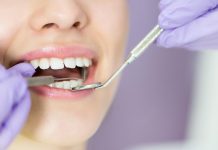
(AscendHealthy.com) – Many of us take pride in carefully selecting toothpaste, mouthwash, and floss. We faithfully use these products along with our toothbrush daily.
Sounds like a solid plan for good oral health right? Ummm, maybe not. As it turns out, your toothbrush might be grosser than you think. Discover the unseen dangers of our toothbrushes.
Learn Why Your Toothbrush May Be A Bacteria Magnet.
What’s Hiding In Your Toothbrush?
Most of us take our toothbrushes for granted. But these seemingly virtuous products might actually be home to 10 million or more bacteria.
When researchers analyzed the toothbrushes of healthy people as well as those with diseases, they found viruses and bacteria, including Staphylococcus aureus, E. coli, and herpes simplex virus. How could all that disgusting stuff end up on a toothbrush?
The American Dental Association (ADA) cautions that when we flush the toilet, fecal bacteria may travel to our toothbrush. Moreover, just touching a surface with germs and then handling a toothbrush may contaminate the bristles.
Leaving a toothbrush on the sink might seem convenient. But in addition to its close proximity to the toilet, a toothbrush in this area may get splashed with germ-laden water when household members wash their hands.
Got kids or pets in the house who accidentally knock a toothbrush on the floor? Those bristles may become contaminated with bacteria from outdoors, including the inevitable dog or cat poop that someone walked in (oh, Fluffy, why?!).
6 Tips to Make Your Toothbrush Less Gross
Now that we know why our toothbrushes are so disgusting, we can brush up on the related guidelines for staying healthy. From how often to replace your toothbrush to how to avoid accumulating bacteria, follow these 6 tips:
- Out With the Old, In With The New: Dentists and toothbrush manufacturers agree: Our oral health benefits by replacing our toothbrush every three to four months.
- Get Sick? A Trick: If anyone in your household becomes ill, invest in new toothbrushes after recovery.
- Not All Toothpaste Is Created Equal: Ignore the TV ads and marketing lingo for “brighter, whiter” teeth. Instead, look for a toothpaste that contains triclosan/copolymer, which researchers have found to be more effective at destroying the germs that reside in our mouths.
- Sharing Is Not Caring: We grew up learning that sharing is good. But when it comes to toothbrushes, not so much. Choosing a different colored toothbrush handle for each household member may reduce the risk of someone using your brush.
- Toss That Cute Container: Containers for storing our toothbrushes may look adorable in the store (doesn’t every kid need a toothbrush container resembling Superman?). But the ADA recommends placing toothbrushes upright after using them, then letting them dry in the air. Moist bristles in a closed storage box allow viruses and bacteria to flourish.
- Lid Down, Please: Keeping the toilet seat lid down when household members flush cuts down on the potential for flying fecal matter.
Learning the “yuck” aspect of our toothbrushes might not exactly seem like upbeat information. But the tips above such as choosing a more effective toothpaste may improve our overall health. For specific concerns about your overall oral hygiene, check with your dentist.
~Here’s to Your Healthy Ascension
Copyright 2023, AscendHealthy.com




















